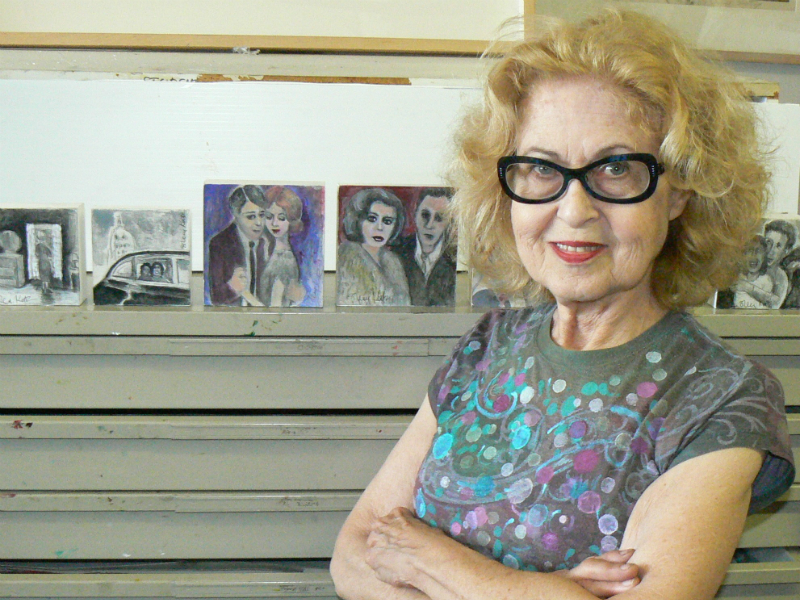When the summer sun broils through the huge windows in Shirley Katz’s uncooled studio, it’s nice for the artist to have a home-based project. She found one using small squares of wood measuring four to six inches as surfaces for transfers of her drawings. A solo exhibition of them, appropriately titled Diminutives, will be mounted from Oct. 30-Nov. 3 at the Centre d’Art E.K. Voland Gallery on the ground floor of the Canal Complex at 4710 St-Ambroise St., the former mattress factory where Katz has her studio. Meanwhile, she’s having the time of her life “playing with blocks.”
The drawings date from the past 40 years of her oeuvre, selected for their compositional suitability on the small surfaces as well as their themes that she will display in their respective groupings. Many of these themes arise from childhood experiences that piqued her interest.
“My parents were Holocaust survivors and I was born in Germany. Here, we had a house on Clark Street and our dining room had a drawer full of photographs of dead relatives,” says Katz. “I used to take these photographs and squint to make them three-dimensional. It was like visualization, because I wanted to connect with these people.” This visualization later translated into her superb ability to shade and model her subjects.
“There were always certain themes in my work, like mothers and children, or interiors, because of my interest in the angles,” she says. As a child, she drew “fancy ladies” using models from fashion and movie magazines as her muses. Marilyn Monroe is still a favourite. Her successful series of slightly aerial views of upper class women wearing their pearls and rattling around their mansions captures the dynamic of tension that pervades much of Katz’s work. Many of the souls gazing from the blocks have the aura of another era, captured in moments of happiness, yet with an undercurrent of unease.
Dancing couples achieve a similar dissonance – particularly one featuring a woman clutching her partner in a vise-like grip while he looks like he’d rather be elsewhere.
Subtle social commentaries like these have been Katz’s hallmark, and she suggests that it’s not only her personal background, but the influence of cartoonists William Steig and Saul Steinberg. Their caricatures in The New Yorker found irony in 20th-century life.
READ: TURKISH COMPOSER DEDICATED TO HOLOCAUST EDUCATION
Katz also makes it a habit to do things her way. One incident that filtered into her work occurred during the five years she taught Grade 6 at Edward VII Elementary School before she became a sought-after adult art teacher and, until 2007, head of the Saidye Bronfman Centre School of Fine Arts drawing and painting department.
“I was singing with my students and the vice-principal walked by and told me never to do that again,” she says. But she persists in another manner. An entire series of singers, from open-mouthed women to portly men in the shower, issued from her hand and make it onto several of these wood blocks in the show.
Katz uses the transfer technique to lift her drawings from paper. A coating of acrylic medium absorbs the image and is pressed against a treated wood block. After it dries to the block, the paper support can be rubbed away, leaving the image in reverse adhered to it. “I also add India ink, graphite, watercolour, oils and acrylics,” says Katz, who colours the transfers and further transforms them.
The blocks of wood can stand on their own as a form of portable art or they may be framed for a wall. Katz is donating a portion of the exhibit’s proceeds to the adolescent and young adult oncology program of the Segal Cancer Centre at the Jewish General Hospital.
For an invitation to the show, email Katz at [email protected].
